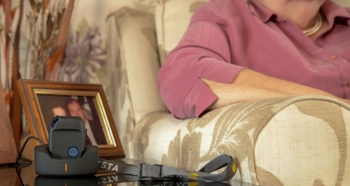
Supported Living Business
A supported living business is one with the purpose of providing appropriate accommodation to people who typically have additional health or care needs and require more specialised residential environments.
The purpose of a supported living service is to meet the needs and requirements of a person, whilst also providing them accommodation within the community to avoid isolation or institutionalisation. In many, but not at all cases (depending on the individual concerned), supported living services will aim to help people achieve greater independence and perhaps move towards living independently.
Sometimes supporting living arrangements involve long-term housing, whilst other times they are short-term supported stays. Sheltered accommodation for the elderly is common, with the provision of a site warden, as is supported living for adults with disabilities who are looking to retain as much independence as possible.
There are regulations in place for supported living businesses, which we will touch upon in the next section.

How to start a supported living business in UK
Setting up a supported living service is not easy, but it’s a fulfilling challenge that can benefit many people in your local community.
The first step in any business proposition is to know your target market. You may think that this is obvious – those in need of supported living accommodation – but there’s more to this. Are you accommodating anyone in need of supported living? Or are you taking only certain clientele? Supported living accommodation often provides to people with a history of substance abuse and to people with behavioural issues, as well as disabled adults, the elderly, and those with mental health needs.
Once you have established how much or little you want to provide, then you can begin to tackle the four steps of starting your business:
- Market research
- Registration
- Insurance
- Business fundamentals (plan, budget, marketing, recruitment)
Market research
Research is easy enough to orchestrate: are there any services of a similar nature in your area. If so, what type of supported living business are they. Are they not providing something you could? Speaking to the local authorities could be a good move here, as they will often be involved, but networking with the voluntary and charity sector is also a solid move.
Registration
There are three registrations you will need to do. Firstly, the business will need to be registered with the government. In the UK this is done with both His Majesty’s Revenue and Customs (HMRC) for tax purposes and with Companies House. Registering a limited company currently costs £12 and takes approximately 24 hours to be confirmed. The Gov.uk website has a handy guide about how to set up a company.
The second registration is with the Care Quality Commission – or a similar organisation if you are outside of England. In Scotland and Wales for example, this is the Care Inspectorate. Registration is a legal requirement in the UK, as per the Health and Social Care Act 2008. The requirement is to register both the organisation and the registered manager, and supporting documents will be required – as will a Disclosure and Barring Service (DBS) check to investigate any past criminal wrongdoing.
The final registration is new from 2024 and is specific to supported accommodation for those aged 16-17. Registration to support these young adults will be through the Department for Education (DfE) and will be annually reviewed. An as-yet undisclosed fee will also be required. More information can be found via the UK government’s page on supported accommodation fees.
Registration of your organisation should be done once you have a clear goal or purpose for your services, and once premises are ready for use. For more information, visit the Care Quality Commission’s page on registering as a new provider or read this article on how to register with the CQC.
Insurance
In care services, insurance is a big part of operations, and there are many types of insurance you will need for your supported living business including:
- Public Liability Insurance
Protection against compensation claims for from clients, customers or other parties due to injury or damage. - Employers’ Liability Insurance
If you employ staff, you’re legally required to have this insurance. It protect you, the business, against claims from staff due to suffering they may experience as part of the work – illness, injury etc. - Business Buildings Insurance
Protection for the supported living accommodation. - Business Contents Insurance
Protection for what’s inside the supported living accommodation, which may be damaged, lost or stolen given the nature of the clients housed. - Product Liability Insurance
If a product in one of the homes causes an issue, this covers you. - Business Interruption Insurance
A little more niche, but this is for circumstances where floods, fires, an earthquake might put you out of action temporarily. Flooding is the most common for the UK, and businesses in locations like Gloucester would certainly have this type of insurance policy.
Business fundamentals
The final part is for you to establish the fundamentals of your business. The first step is to confirm whether you want to be a limited company, as is most common, or perhaps a sole trader or a business partnership.
Next you will need a business plan to illustrate how you’re going to start the business, acquire properties, prepare the accommodations, and market your business. A financial plan detailing budget and capital should also be prepared, ideally using a financial advisor of some sort.
Recruitment should also be considered, though you will want to use the research to gauge how many people are needed per property, or per type of support you’re providing so that people have a chance to get settled, adapt to the role, and perform any necessary training.
Once these are in place, and you have dealt with the other aspects of research, registration, insurance and taxation, then you’re good to put your supported living business into the market and offer your services to the local authorities.
For more information on business start-up and operational tips, why not read our guides on how to start a care agency or how to grow your home care business.

How to set up supported living accommodation
Anyone starting a supported living business doesn’t automatically know how to set up supported living accommodation, but the learning process will help shape and improve your service delivery.
As with establishing the business, having a business plan for supported accommodation is a good first step. A quick browse on a popular search engine will find you a supported living business plan PDF and the results will serve as a supported living business plan template to aid your setup.
Property:
It sounds silly but you shouldn’t overlook where to establish your business. A head office is one thing, but the accommodation is key. This could be one complex or many properties. That comes down to your finances. Then there’s the type of property. Elderly people will struggle with stairs, so do you go for bungalows or install a stair lift?
Location:
The location of property is just as important as the building itself. It’s no good offering assisted living if your housing is in the middle of the open countryside where access is limited and so too are communications. There’s a sensible balance to be found between establishing supported living in an area that isn’t a crime hotspot, a noisy student district, or a risk like a dual carriageway. Investigate the surroundings, assess the risk, and weigh up your options.
Acquisition:
You need to buy the property, or partner with somebody/an organisation that already has suitable premises and is seeking to occupy them.
It’s not uncommon for agreements between supported living businesses and private landlords, especially given the cost of outright buying property, but it does carry additional requirements to meet the demands of the landlord regarding things such as property maintenance.
Preparation & Standards:
Supported accommodation has to meet specific standards of upkeep and habitation, to ensure suitability for those in need.
The Health and Social Care Act 2008 covers some of these standards, as do the Care Standards Act 2000 and the Supported Accommodation (England) Regulations 2023. The Care Quality Commission will carry out assessments of new and existing properties, and in cases where a supported living business is failing to adhere to the required levels of habitation the UK Government will carry out its own inspections and, if deemed necessary, can revoke the business’ license to operate.
You can find more information about the regulations for England at the legislations.gov website.
Housing for people with disabilities
Housing for disabled adults is amongst the most common type of supported living accommodation. It’s vital to provide sheltered accommodation to disabled people because they often face discrimination. There can be significant prejudice about their mental faculties or their physical capabilities, and some landlords may refuse to rent to a disabled individual.
That’s an external issue, but there’s also the internal problem of self-confidence, and the challenge of adapting to living in this type of accommodation and away from home for many younger people. Supported housing for adults with learning disabilities is a situation where often people who are dependent on others – typically young adults – move in to a more independent living situation where they will receive visitation and check-ups, rather than be seen 24/7. This can be nervy for people without disabilities or a limiting health condition, let alone those with.
These concerns can weigh on the mind, which is why it can be difficult for disabled people to engage with the process of renting (or buying) property. There’s a lot to consider: how much can they afford on disability allowance or Personal Independence Payment (PIP)? Who do they need to talk to about renting? Is it just the supported living business, or should they also speak to Citizens Advice? The individual may have concerns about conversational skills. They may require someone else to advocate on their behalf but that person has limited availability, making the process take longer.
There are many factors and scenarios that can make the housing process intimidating and tiring, but a good supported living business will strive to minimise the difficulties and make a smooth onboarding process for anyone in need of sheltered accommodation but especially those with disabilities.

How technology can benefit supported living businesses
Modern healthcare technology is finally catching up to society’s wants and needs. We now have a whole range of products, solutions, and services to assist people in their daily lives – but especially so for people who are frail, unwell, or living with disabilities.
For a supported living business, the first bit of software you will want is a care management solution. This is software that will handle your supported living operations, and provide automation where possible for a smoother, quicker process.
The basic way of running your business is to use Microsoft Office (or similar) and a suite of programs to handle the database and accounting elements of your work. The problem is that these solutions lack the capability to automate repetitive or scheduled elements of daily operations, meaning extra work for the admin team. There’s also a lack of intelligence in flagging up issues with compliance, audits and inspection, meaning this is a manual and painstaking approach for staff to ensure accuracy and adherence to the law.
Nobody believes administration shouldn’t take time, but that time is measured in human resources who require pay and are susceptible to stress. Everybody loves the idea of reducing the admin workload because happy staff means a happy workplace and better staff retention. Care management software – such as Access Care Management – reduces the time spent on governance processes, allows for more effective audits, gives better management visibility, and improves your responsiveness to the needs of clients.
“Auditing and monitoring of the environment, such as fire safety inspections, incident logs and other aspects of your services – aside from the care and support itself – is like the heartbeat of the organisation. They must be carried out and recorded regularly, like clockwork.
“If they are missed, then your service provision really isn’t where it should be. Access Care Compliance gives me the reassurance that all these tasks are being done, properly and when they should be.”
Anoop – Aspire Care Group case study
It also has the added bonus of making things clearer for the CQC compliance inspections. Compliance with safety standards and regulations is crucial to your survival as a business, let alone your success. By utilising effective software solutions you can flag up any issues with regulation compliance almost immediately, giving you the time to resolve the problem before problems escalate. You can also properly log incidents, accident reports, and your own auditing. One of Access’ big selling points is that our solution offers a mock inspection, using the CQC’s Key Lines of Enquiry (KLOEs), or as of 2024 the CQC Quality Statements. The results of this can help you establish detailed action plans for better day-to-day operating but also ready for a real inspection.
The by-product of doing all this is improved care quality and resident satisfaction, but there are other solutions available too. We touched upon recruitment earlier as part of the business fundamentals, but the are interactive training programs available online or through care software that can accelerate or elevate a person’s skillset and competency to work in a supported living business.
Home devices to track a resident’s movement and their interactions with things such as the kettle, the toilet, the front or back door – all are available on the market. The current typical approach to supported accommodation is that a site warden works a daytime shift and then the Alarm Receiving Centre (ARC) takes over out-of-hours. ARCs are reliable, but there can be a slight delay in the reaction and response from these services compared to the alert approach of wearable technology.
Devices such as Access Oysta can be worn to provide GPS tracking, an SOS button to call for help, and two-way communication. These functions are great for supporting personal independence but also for safety – as we explain in our article on wearable technology for autism. Of course, a vulnerable person’s behaviour outside of the supported living accommodation isn’t your responsibility, but collaboration with local authorities, family, friends, or carers can help to establish practices and routines that can benefit all parties involved.
This brings us to an end of our guide on how to start a supported living business. We hope that it has been insightful, but we strongly encourage doing as much research as possible on all aspects of the business preparation and operation using this as a first step.
We’re proud to offer complete software packages that assist thousands of organisations that provide care and/or accommodation to elderly, disabled and vulnerable people on a daily basis, but we also acknowledge that there are many excellent competitors on the market too. Your goal is to learn about the solutions available and compare them. Compare our solutions to theirs and see who offers what, what suits your needs, and what’s within budget. Do that and you’re on the way to launching a successful supported living business.

